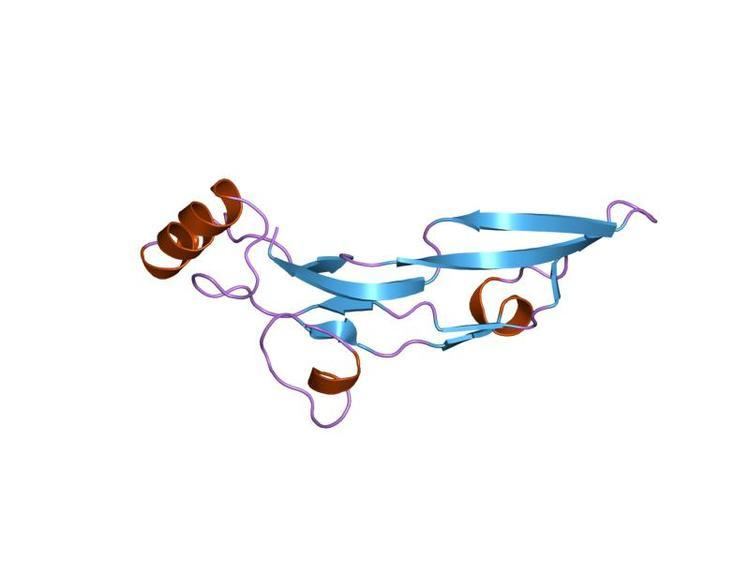Symbol TGF_beta InterPro IPR001839 SCOP 1tfg | Pfam PF00019 PROSITE PDOC00223 SUPERFAMILY 1tfg | |
 | ||
The transforming growth factor beta (TGF-β) superfamily is a large group of structurally related cell regulatory proteins that was named after its first member, TGF-β1, originally described in 1983.
Contents
Many proteins have since been described as members of the TGF-β superfamily in a variety of species, including invertebrates as well as vertebrates and categorized into 23 distinct gene types that fall into four major subfamilies:
Transforming growth factor-beta (TGF-beta) is a multifunctional peptide that controls proliferation, differentiation and other functions in many cell types. TGF-beta-1 is a peptide of 112 amino acid residues derived by proteolytic cleavage from the C-terminal of a precursor protein. These proteins interact with a conserved family of cell surface serine/threonine-specific protein kinase receptors, and generate intracellular signals using a conserved family of proteins called SMADs. They play fundamental roles in the regulation of basic biological processes such as growth, development, tissue homeostasis and regulation of the immune system.
Structure
Proteins from the TGF-beta family are only active as homo- or heterodimer; the two chains being linked by a single disulfide bond. From X-ray studies of TGF-beta-2, it is known that all the other cysteines are involved in intrachain disulfide bonds. As shown in the following schematic representation, there are four disulfide bonds in the TGF-beta's and in inhibin beta chains, while the other members of this family lack the first bond.
interchain | +------------------------------------------|+ | ||xxxxcxxxxxCcxxxxxxxxxxxxxxxxxxCxxCxxxxxxxxxxxxxxxxxxxCCxxxxxxxxxxxxxxxxxxxCxCx | | | | | | +------+ +--|----------------------------------------+ | +------------------------------------------+where 'C' denotes a conserved cysteine involved in a disulfide bond.
Examples
Human genes encoding proteins that contain this domain include:
AMH; ARTN; BMP10; BMP15; BMP2; BMP3; BMP4; BMP5; BMP6; BMP7; BMP8A; BMP8B; GDF1; GDF10; GDF11; GDF15; GDF2; GDF3; GDF3A; GDF5; GDF6; GDF7; GDF8; GDF9; GDNF; INHA; INHBA; INHBB; INHBC; INHBE; LEFTY1; LEFTY2; MSTN; NODAL; NRTN; PSPN; TGFB1; TGFB2; TGFB3;
